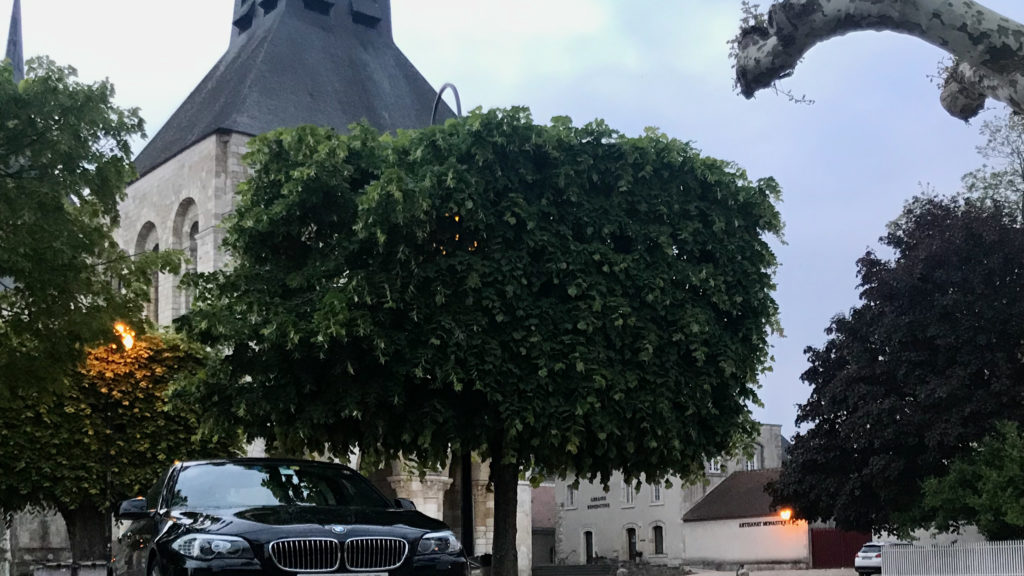It’s funny to think that a lick of paint could change music forever. You might not think that’s possible and if I am exaggerating, it’s only by a speck. In the world of European medieval music, so much was centred on religious rites that you could argue it was a change in church design that popularised polyphony.

Medieval cathedrals were wealthy enough to fund their own musicians. These churches, being made of undecorated stone, reflected every sound from every surface. The echoes of these sounds, the reverberations might take several seconds to bounce around the large space. The interference patterns that result from the merging of these echoes make it impossible to hear anything other than the most monotonous sounds. And so the chanting intonation was adopted across the age, a practical solution and one that dominated the specifications of compositions by musicians such as Palestrina.
Back in 2009, while working in London, I’d take a train after work on Friday and meet my wife for dinner. I’d finish my week’s geoscience office work, board a tube in Uxbridge and emerge from the rail system to meet my wife by the Luxembourg Gardens in Paris. She was doing historical research as the writer in residence in the Centre Culturel Irlandais and one of my weekend visits coincided with Nuit Blanche.
Nuit Blanche is an annual event when Paris extends an open invitation to its galleries and museums. Residents and visitors alike can enjoy the freedom of the city for a night and celebrate the end of summer and the transition into the chillier, wetter autumnal weather.
We took advantage of Nuit Blanche to visit Janet Cardiff’s sound installation in Saint-Séverin. Her sonic platform was a free standing circular arrangement, a choir of forty loudspeakers in the nave of the active Catholic church. Rather than thinking about the first ever recorded operation to remove gallstones, something that allegedly happened in this church in 1451, I concentrated on the melodious, mellifluous voices that filled air. Cardiff used the forty different harmonies from the Thomas Tallis motet Spem in alium. The surprising feature of her soundscape was that you could hear forty singers, set up in groups of eight loudspeakers, each set representing five singers, with the five voices alto, tenor, baritone, bass and soprano rippling around the stage. The joy was that we could, and almost everyone did, put our ears to each group’s virtual mouth in a way that you never would if the singers were standing there. Standing in the middle, the sound of the whole choir was utterly beautiful and actively swirling around your head, inside and out. Impossible with a real choir, it was unforgettable. Isn’t that what makes great art, surprise?
Recently, while based in Westminster for a few years, we thought nothing of hopping in the car and driving to the Pyrenees for a few days. This we did in June 2019 and it was a fantastic thing to be able to do. You might not appreciate how isolating it can be to live on an island if you already think nothing of driving from Milan to Munich or taking a train from Moscow to Marseille or Mumbai to Manmad. Air travel has been great but you are limited to what you can carry. And for me, that’s great for business but a pain for anything else.
One particular joy on that 2019 driving holiday was accidentally finding our way to Saint-Benoît-sur-Loire. Our hostess in a B&B in Les Sapins suggested we should get dinner in Germigny and take a few minutes to visit the churches in Gemigny and Saint-Benoît.
We arrived in Saint-Benoît at sunset and we parked the car across from the Abbaye de Fleury. Our entrance coincided with the start of vespers (evening prayer) and the plain song chanting of the monks in that ancient stone building was simply uplifting. There were only about twenty monks but the power of their voices was aided and amplified by the plain stone pillars and bare walls.
There’s an irony in having enjoyed Patrick Leigh Fermor’s introspective travels in A Time to Keep Silence when I write of the music of the monasteries, churches and cathedrals that are anything but quiet. They remain timeless though seemingly less attractive in the modern world. And by the way, another irony was that while reading it, I felt the need to keep a dictionary to hand. I put a dot in the margin every time I needed to check his meanings because so many of his explanations of meditation and contemplation used unfamiliar words. Concupiscence. Crepitation. Cenobitic. And that’s just three words from one page I opened just now.
When Baroque churches became the rage, music was freed. The small, decorous and above all, painted churches suited polyphonous music. The decorations, paint and wall coverings absorbed the impinging sounds, reflecting much less than would bare stone. Notes no longer had to overlap and phrases would remain intelligible.
Bach and Handel capitalised on this brilliantly. Handel changed his compositions in the 1730s and wrote ever more oratorios. Some say that both Bach and Handle composed for the changing tastes of their audiences but in truth, the places of performance were what had changed, allowing such music to be performed and appreciated. There was a lick of paint and the physics of sound did the rest.
Perhaps you’ll remember that Handel wrote the Messiah in about twenty-four days as you listen to it this Christmas. Isn’t it odd that it remains so popular at Christmas considering that Handel composed Messiah as an Easter offering? Anyway, we’re still proud that it was first performed in Dublin on April 13, 1742!

Leave a Reply